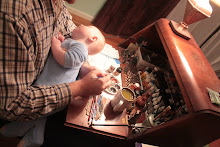This book was far less gripping than Empires of the Sea, the last history book I read, being much drier, due in part I suspect to the comparative lack of information. Where as Roger Crowley had personal diaries and letters to draw from, Mr. Miles had only second hand histories and archaeological data from which to build his story. Regardless of that though, the style of these two books could not be more different, with Mr. Crowley putting the reader in the action, and Mr. Miles takes scholarly distance to a new height. The book spends far more time discussing sources and methods than in explaining general history, or geographical relationships, which I think is less useful way to write in a general history of this type. It does have an extensive bibliography and end notes, which do help to explain some of the assertions made. In conclusion, it is hard to recommend this book to those who want a mere overview of Carthage, as it serves more as an examination of syncretism in Greek/Punic culture, and its impact on the ancient world.
The Punic wars though, remained interesting even with the dry style, and now I am more interested than previously in gaming in that period (as well as reading a military history). The early Republican Romans fought an extensive set of wars all over the Mediterranean, and Hannibal is their iconic enemy. I think that Warmaster is clearly the way to go with, since it allows for large armies, although Hail Caeser! and Warhammer Ancients could both do a good job with the period. 10mm is far cheaper than 28mm though, particularly as there are no Early Republican or Carthaginian plastics currently in production.
Excellently, a "Carthaginian" army is mostly made up of generic forces, either supplied by Barcan Spain, various allied Celtic tribes, or as mercenaries. The only really unique forces would be citizens from the Punic cities, Numidian horse, and elephants. The generic nature of the army allows for the component pieces to be used in other areas, and in other wars. With a few additions, it could be a Celtic invasion, post Alexander Macedonian kingdom, or Greek Successor army, all fighting against a common Roman army. Somthing to think about when I need a new project. (2030?)


1 comment:
That's how I got a Carthaginian army. I had Spanish, Numidians, Gauls, etc. so all I "needed" was some Punic infantry and an elephant in order to put together a counterpart for a friend's Repblican Romans.
Post a Comment